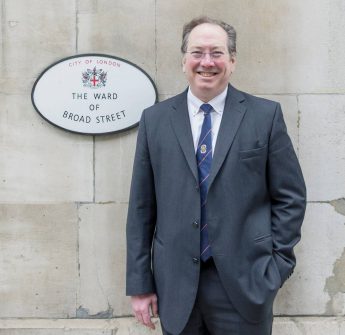Remarks to: IoD India (Institute of Directors), 2022 London Global Convention on Corporate Governance & Sustainability, The Montcalm, Marble Arch, London, W1H 7TN, 11:00-12:00, Thursday, 10 November 2022.
Boardroom Challenges In A New World Order
Emerging Challenges for Board Leadership in the New Economy
Building high performance Boards in uncertain times: Balancing Strategy, Operations & Compliance
Board’s oversight for fundamental Seismic Shifts in Global Geopolitics & guide to a disrupted world
Board’s Human Capital Strategy – Rising to the Challenges of the Future Work Place
Board Leadership and Strategy for leveraging corporate culture and value chain
Fellow Panellists, Distinguished Guests, Ladies and Gentlemen,
It is a delight and privilege to have been asked to open this panel with some remarks of my own before chairing. In the ten minutes allotted, I want to remind us all that the entire basis of governance is navigation and helming boats. The origins of cybernetics during and after WWII used Greek words for navigators and helmsmen. Kubernaein [kubernáo], meaning ‘to steer’ is the root word for us today.
Governance boils down to feedforward and feedback. Feedforward is deciding where to go. Feedback is deciding how well you’re doing getting there. The tactical, management matters are those of the helmsman, adjusting the rudder to small feedback signals. The management matters are within sight of the boat, ‘inside the horizon’. The strategic, board matters for directors are those of the navigator, adjusting direction to signals about the final destination’s whereabouts. Board matters are typically not within sight, ‘over the horizon’. And of course management and board need to ensure a safe and watertight boat.
Today’s panel will address building high performance boards and rising to the challenges of major disruptions. You will hear from experts about energy input, schools, entrepreneurship, and financial markets governance.
So I want to set an over-arching point that governance is about time. The time beyond the navigator moves inexorably toward him or her, then moves inexorably towards the helmsman who makes the adjustments in direction. Time moves inexorably from board instinct to board consideration, management consideration, and execution.
Hasta Mañana
One of my favourite jokes is about a Spaniard unsuccessfully trying to translate “mañana” for an Irishman. The Irishman concludes, “we have about 40 words with a vaguely similar meaning, but none convey quite the same sense of urgency.”
Getting people to take action is easiest when their backs are against a wall. This is even a respected management approach, as researched by me in 1992’s “Vision Into Action: A Study Of Corporate Culture” – “the crisis point as trigger”, in other words, “if you don’t have a crisis, create one.”
In an increasingly crowded and interlinked planet, long-term problems without a crisis point abound. Mankind knows it is poor at addressing long-term problems. French humorist Alphonse Allais quipped, « Ne remets pas à demain ce que tu peux faire après-demain. » “Never put off till tomorrow that which you can do the day after tomorrow.”
Roy Amara (1925-2007) was an American scientist and President of the Institute of the Future. Amara’s Law has gained widespread currency, “We tend to overestimate the effect of a technology in the short run and underestimate the effect in the long run.” My corollary to Amara’s Law might be, “We tend to overreact to problems in the short run and underreact to problems in the long run.”
A typical response is to let high pressure problems rise to the top of the in-tray, and then solve the one on top. But the chosen problem may not be the optimal one to fix, thus crowding out more worthy and weighty matters. A second disadvantage is that “act now; procrastinate later” tends to squeeze out time to think and learn in favour of “arrest now”, “legislate now”, “spend now”, with all the poorly informed actions and unintended consequences that result. Sometimes the old aphorism is right, “Given enough time, what you put off doing today will eventually get done by itself.” Or “Given enough time, what you put off doing today will eventually get done by other people.” Finally, society is extremely good at making decisions. We make decisions today. Then we make other ones tomorrow. We are too good at this. We need to make considered decisions that stick. The future isn’t changing that fast.
In 2015 a lot of people pondered and issued 17 UN Sustainable Development Goals, a “shared blueprint for peace and prosperity for people and the planet, now and into the future”. Solving these can only be done with sustained effort over long periods of time. There are numerous examples of long-term problems that are inadequately addressed: population growth, moving to quantum-resistant encryption, bearing the costs of more diverse and resilient supply chains, the replacement to London’s Thames barrier. Bringing the impact of future problems into the decisions of the present is the big challenge for governance.
Bring Back The Future
There are many elements to solving long-term problems, but what often unites long-term problems and long-term solutions is bringing costs from the future back to the decisions of the present. And this leads us to markets and discount rates.
Markets are gigantic engines to help people make unimaginable numbers of daily decisions, particularly about future value and future resource allocation.
Boards use interest rates to calculate discounted values over time. To work out the cost of capital. A high discount rate implies that people don’t value the future much, they want money increases quickly, and therefore that less investment is needed now to guard against future costs. A low discount rate says we value future generations. Environmentalists before 2008 claimed that society made poor decisions because discount rates were too high. Since 2008 with interest rates near zero, it’s not clear that society has been making better decisions. And now interest rates are due to climb again. So interest rates are clearly not the complete answer.
The Big Decisions
The big social decisions that matter, education, health, environment, and social care for the elderly and disadvantaged need consistent long-term attention. Just like taking a diet a day at a time, we need to find ways to convey urgency – do something today in a positive direction, however small – with long-term commitment. “We need to react appropriately to problems in the short run and appropriately to problems in the long run.”
Boards budget, depreciate, and amortise to bring the future into the present, day-by-day, week-by-week or month-by-month. But new examples are combining markets with long-term commitment such as a sovereign sustainability-linked policy performance bond we helped Chile issue in March this year. The bond pays more interest if Chile fails to reduce its emissions and increase its renewable energy significantly by 2030. Chile has brought forward the costs of failure to today’s decisions, and bond-cuffed itself to their success.
The same policy performance bond thinking was used in 2017 by Malaysia’s sovereign wealth fund, Khazanah Nasional Berhad, raising RM100 million in a second tranche – Sustainable & Responsible Investment (SRI) Sukuk tied to educational attainment. If the state failed to raise educational achievement, then investors were compensated, especially those who were investing against promises of an improved future workforce.
So on today’s panel, I’d like to hear a bit about how to avoid that corollary to Amara’s Law- “We tend to overreact to problems in the short run and underreact to problems in the long run.” Governance can deploy more creative management, market, and finance mechanisms that bring future costs into today’s market prices, and thus our daily decisions.

